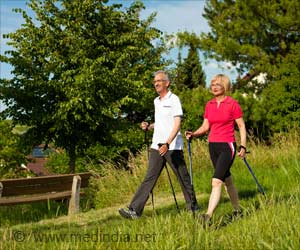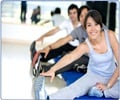Being active all day can help you live longer. So, move more by taking the stairs or cycling to work to increase your life expectancy.

‘Staying active all day can help you live longer. So, move more by taking the stairs or cycling to work to increase your life expectancy.’
Read More..




"People think they have to start going to the gym and exercising hard to get fitter," said study author Dr. Elin Ekblom-Bak, of the Swedish School of Sport and Health Sciences in Stockholm. "But it doesn't have to be that complicated. For most people, just being more active in daily life - taking the stairs, exiting the metro a station early, cycling to work - is enough to benefit health since levels are so low to start with. The more you do, the better."Read More..
The study included 316,137 adults aged 18-74 years who had their first occupational health screening between 1995 and 2015 in Sweden. Cardiorespiratory fitness was measured using a submaximal cycle test and expressed as maximal oxygen uptake (VO2 max) in ml/minute/kg body weight. This is the maximum amount of oxygen the heart and lungs can provide the muscles during exercise. You can estimate your VO2 max using either submaximal cycle tests, treadmill tests, or walking tests.
Swedish national registries were used to obtain data on all-cause mortality and first-time cardiovascular events (fatal and non-fatal myocardial infarction, angina pectoris, or ischaemic stroke) during 1995-2015.
The risk of all-cause mortality and cardiovascular events fell by 2.8 percent and 3.2 percent, respectively, with each milliliter increase in VO2 max. Benefits of fitness were seen in men and women, in all age groups, and at all fitness levels. Previous studies have been too small to ascertain whether all of these subgroups profit from improving their cardiorespiratory fitness. There was no plateau of benefit in the total population, with some variation between sex- and age-subgroups.
"It is particularly important to note that an increase in fitness was beneficial regardless of the starting point," said Dr. Ekblom-Bak. "This suggests that people with lower levels cardiorespiratory fitness have the most to gain from boosting their fitness."
Advertisements
She advised, as a rough guide, that for every additional milliliter of VO2 max there will be an average 3 percent risk reduction of all-cause mortality and cardiovascular events. "This is more motivational than just telling people they need to do better. People in the lower range of VO2 max will reduce their risk even more (9%) while those at the upper end of VO2 max will reduce their risk by 1 percent," she said.
Advertisements









